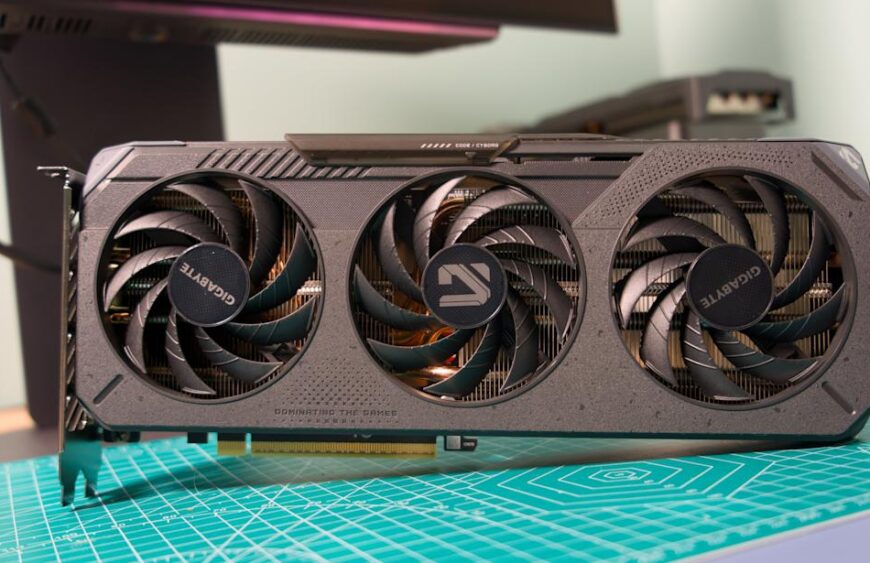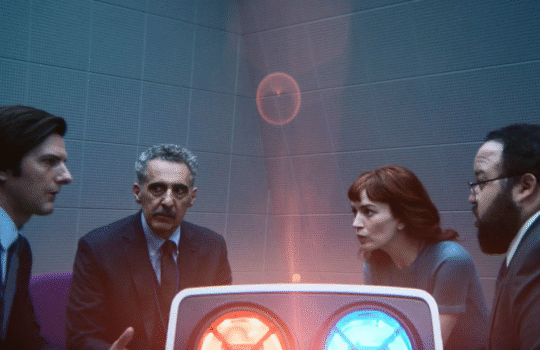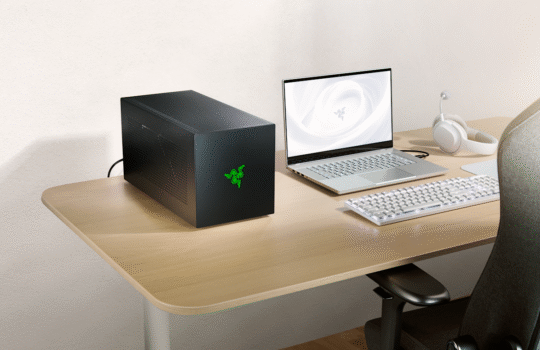Finally, a powerful $350 GPU

NVIDIA releases a brand new video card and AMD follows up with a cheaper one. That’s basically been the cycle of the GPU industry for the last decade, with NVIDIA typically leading the pack and AMD rushing to keep up. But with the recent Radeon RX 9070 and 9070 XT, AMD finally found a winning formula with GPUs that were both cheaper than NVIDIA’s and, in many cases, more powerful. The new Radeon RX 9060 XT, which is meant to take on NVIDIA’s RTX 5060 Ti in 1080p and 1440p gaming, mostly repeats that formula. Starting at $350 with 16GB of RAM (and $300 with a paltry 8GB), it’s launching for much less than the $429 RTX 5060 Ti while delivering a similar level of performance.
Once again, the key for AMD is offering much more RAM than NVIDIA for far less money. Sure, AMD is using slower GDDR6 RAM with 320 GB/s of memory bandwidth, compared to NVIDIAs’ 448 GB/s GDDR7. But in practice, actually having a larger memory pool is more useful when you’re dealing with massive textures and 3D models in modern games. So if you’re looking for the best gaming bang for the buck under $400, the 16GB Radeon RX 9060 XT is undoubtedly a winner.
The Radeon RX 9060 XT delivers a solid amount of 1080p and 1440p gaming power for just $350. It’s not the fastest card around, but it’s a great option for most people.
- Excellent 1080p and 1440p performance
- Affordable retail price
- Solid cooling
- FSR 4 and frame gen is great when available
- Limited support for FSR 4 upscaling
What is the Radeon RX 9060 Ti?
The least powerful member of AMD’s Radeon RX 9000 family (so far), the RX 9060 XT is basically the card you’d get if you can’t stomach spending more than $500 on a GPU. Just remember that video cards tend to jump up in cost once they actually hit stores, depending on availability and the whims of retailers. The RX 9060 XT sports 32 RDNA 4 compute units, 32 RT accelerators and 64 AI accelerators. It can reach up to 3.1GHz speeds with its boost clock and consumes up to 180W of power. In comparison, the $549 MSRP RX 9070 has 56 compute units, while the $599 RX 9070 XT has eight more.
AMD is pitching this GPU as a replacement for the RX 7600 XT, which launched at $329 last year. That card also had 16GB of VRAM, but it had a slower 288 GB/s bandwidth. While the 7600 XT was more focused on entry-level 1440p gaming, the 9060 XT’s hardware improvements make it far more capable. AMD claims it’s 46 percent faster than the 7600 XT across more than 40 games, and in my testing that figure checks out.
For this review, I tested Gigabyte’s RX 9060 XT GPU, which has three cooling fans pointed at a typical copper heatsink. There’s no fancy vapor cooling chamber or any extravagant materials on the card, but at this price range I didn’t expect much.
What’s good about the Radeon RX 9060 Ti?
Across games and benchmarks, the 9060 XT clocked in just about where I expected: noticeably slower than the RX 9070, and either on-par or slightly slower than the NVIDIA RTX 5060 Ti. In 3DMark’s Steel Nomad benchmark, the 9060 XT scored 200 more points than that NVIDIA card, and it was also 90 points ahead in Timespy Extreme. But NVIDIA had a 1,000 point lead in the Speedway benchmark and it was more than 2,000 points ahead in the Luxmark HDR 4 test.
Despite those figures, I’m still impressed that the 9060 XT can stay in the same league as NVIDIA’s RTX 5060 Ti while costing a lot less. AMD’s ray tracing performance has also improved quite a bit from its previous generations, scoring 45 percent faster in the 3DMark Port Royal benchmark. NVIDIA still has the lead in ray tracing in games though, especially with the one-two punch of DLSS 4 AI upscaling and multi-frame generation. NVIDIA’s RTX 5000-series cards can produce up to three interpolate frames for every natively rendered frame, while AMD is still stuck with generating a single extra frame with its FSR 3 and 4 (Fidelity Super Resolution 4) upscaling.
|
None |
3DMark TimeSpy Extreme |
Geekbench 6 GPU |
Cyberpunk (1440p RT Overdrive DLSS/FSR 3) |
Blender |
|
AMD Radeon RX 9060 XT |
8,192 |
91,617 |
80fps |
1,560 |
|
NVIDIA RTX 5060 Ti (16GB) |
8,100 |
139,756 |
136 fps (4X frame gen) |
4,220 |
|
AMD Radeon RX 9070 |
10,997 |
113,012 |
117 fps |
N/A |
|
AMD Radeon RX 7600 |
5,526 |
N/A |
20 fps |
1,013 |
The Radeon RX 9060 XT was able to run Cyberpunk 2077 in 1440p ray tracing “overdrive” mode at a respectable 80 fps, whereas NVIDIA’s RTX 5060 Ti hit 136 fps thanks to multi-frame generation. Still, there’s plenty of wiggle room to crank out more frames: Stepping down to 1080p got me 120 fps, and I saw 90 fps while using the less demanding ray tracing “ultra” preset in 1440p. In terms of raw performance, without any upscaling fanciness, the 9060 XT hit 114 fps in 1080p and 90 fps in 1440p.
The Radeon RX 9060 XT didn’t run very hot during my testing, but that makes sense since it’s purely focused on 1080p and 1440p gaming, During 3DMark’s Steel Nomad stress test, which repeats the benchmark 20 times in succession, the card only topped out at 54 Celsius. I’m used to seeing video cards reaching upwards of 70C under load, so the 9060 XT was a nice surprise. While idling, it sits at 42 Celsius. That’s higher than cards with vapor chamber cooling, but it’s about average for cards in this price range. I didn’t hear any annoying fan noise under load either, since it barely broke a sweat.
What’s bad about the Radeon RX 9060 XT?
There isn’t really much to complain about with the Radeon RX 9060 XT, so long as you’re not expecting too much from a sub-$400 GPU. Still, it would be nice to see support for AMD’s new FSR 4 AI upscaling spread out more quickly. When the RX 9070 XT launched, the feature was only available in a handful of games like Call of Duty: Black Ops 6, and now it’s supported over 60 games. That’s still about half of the games that NVIDIA’s DLSS 4 supports (which so far includes over 125 titles).
On the RX 9060 XT, the FSR 4 user experience still isn’t as simple as activating DLSS on NVIDIA cards. I had to enable it manually in AMD’s Adrenaline software, then flip it on in Call of Duty: Warzone to activate it. On the bright side, I saw an average of 254 fps while playing a match in 1440p with extreme graphics settings, FSR 4 and frame generation flipped on. With frame gen enabled, but no FSR 4, performance dipped to 174fps. And if I removed both of those features, it fell to 110 fps. Clearly, FSR 4 and frame gen helps quite a bit, I just wish it were in more games.
Should you buy the Radeon RX 9060 XT?
Assuming retailers don’t go wild by overpricing the Radeon RX 9060 XT, it’s a solid option if you’re looking for an affordable GPU that’s dedicated to 1080p and 1440p gameplay. At $350, the 9060 XT is well below the RTX 5060 Ti’s $429 retail price, and certainly much cheaper than models being sold for more than $500.
To reach a lower $300 price point, AMD also unveiled an RX 9060 Ti with 8GB of RAM. But honestly, I’d recommend avoiding that entirely unless you only play ancient games in 1080p. It’s worth spending a bit more so you can play newer games with less headaches, and it’s practically a requirement if you want to play in 1440p.
Wrap-up
The Radeon RX 9060 XT is a reminder of a world where we didn’t have to pay more than $400 to get a capable GPU. We already know more than 80 percent of PC gamers play at 1440p or lower resolutions, according to Steam’s data. So for the vast majority of players out there — the ones who aren’t using monitors with crazy high refresh rates or 4K+ resolutions — it’s all the GPU you really need.
Trending Products






